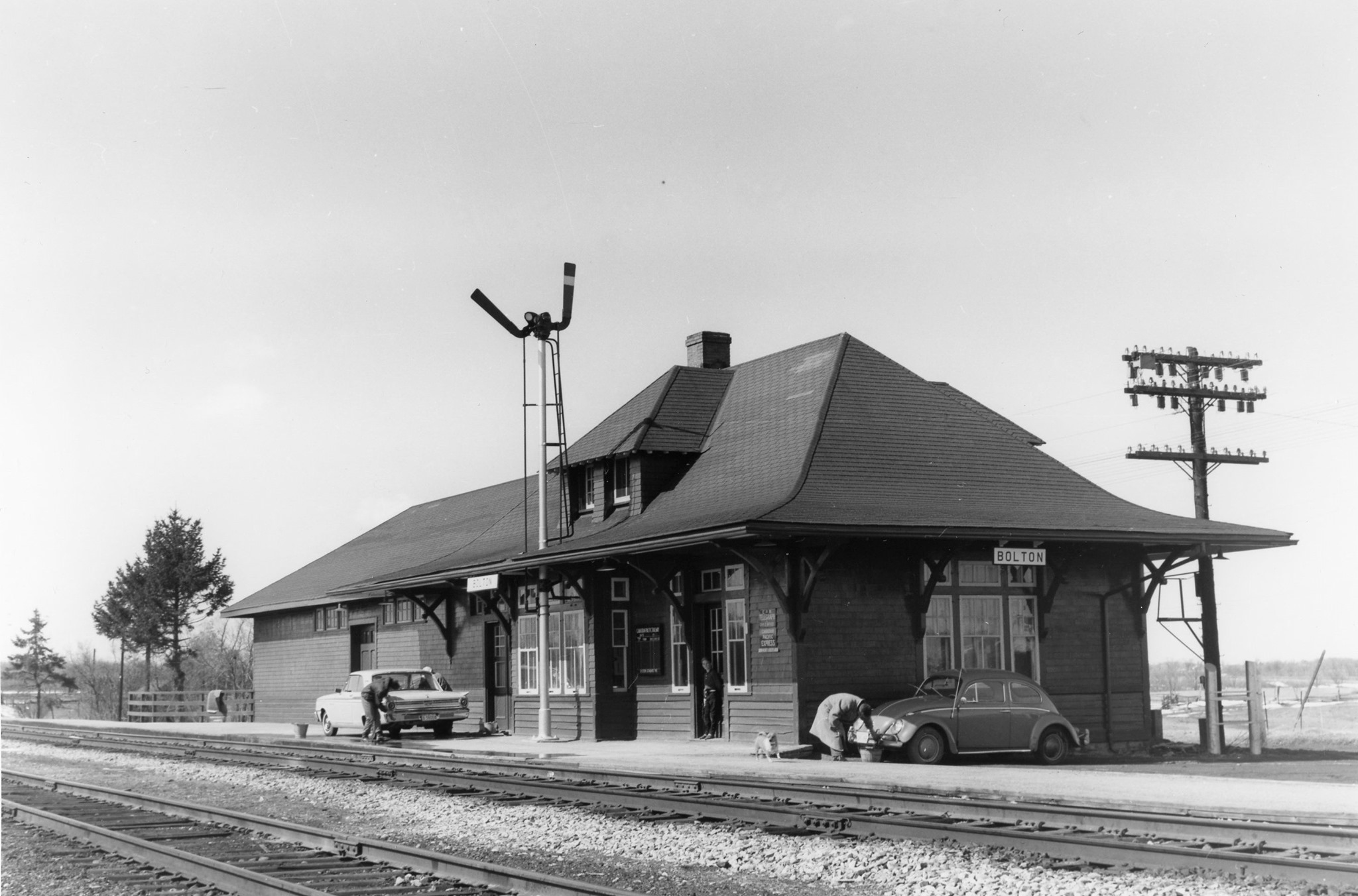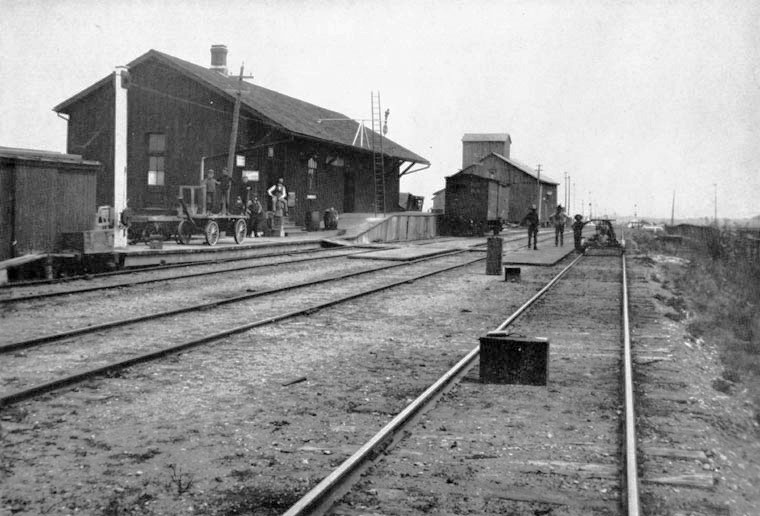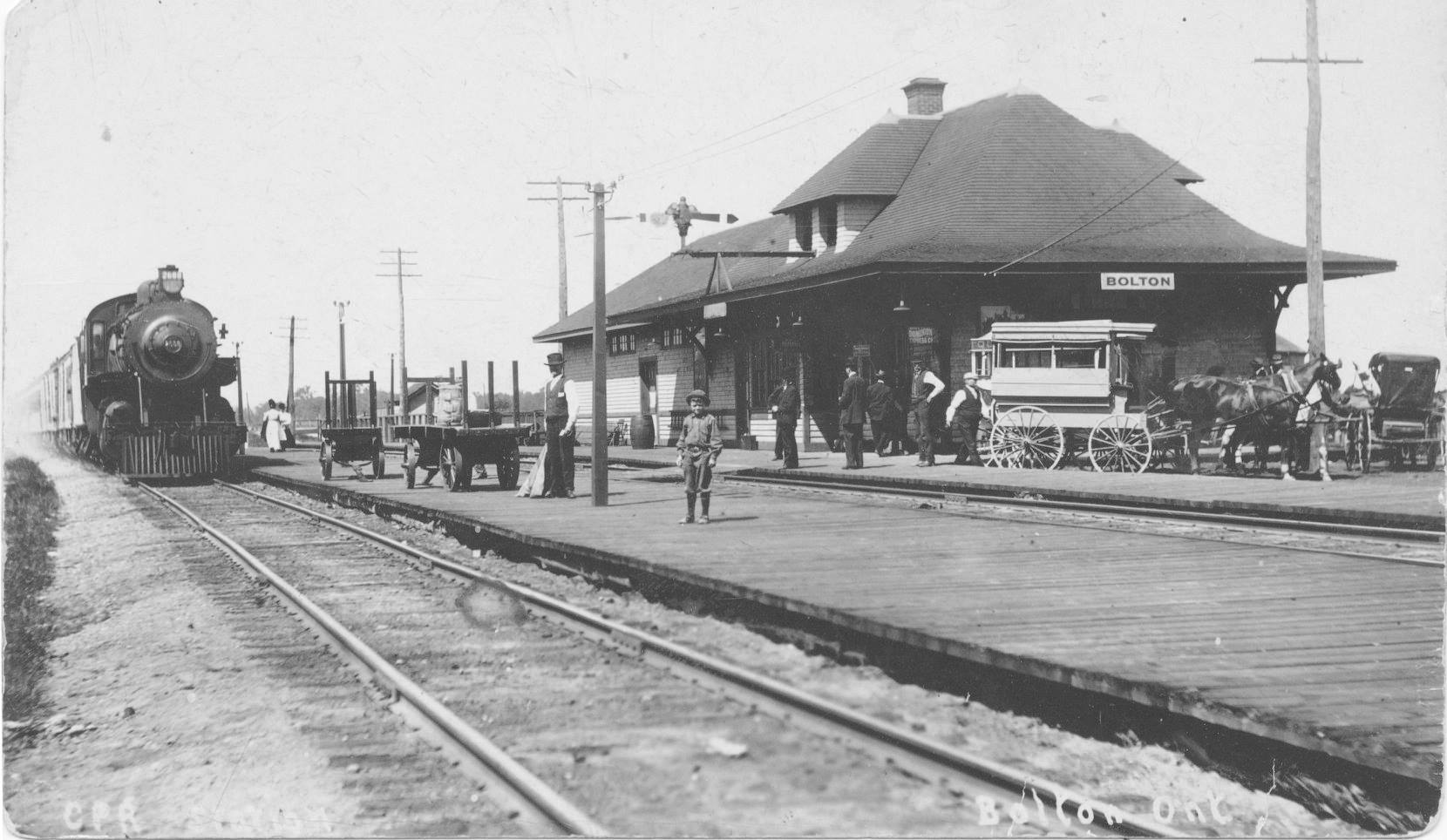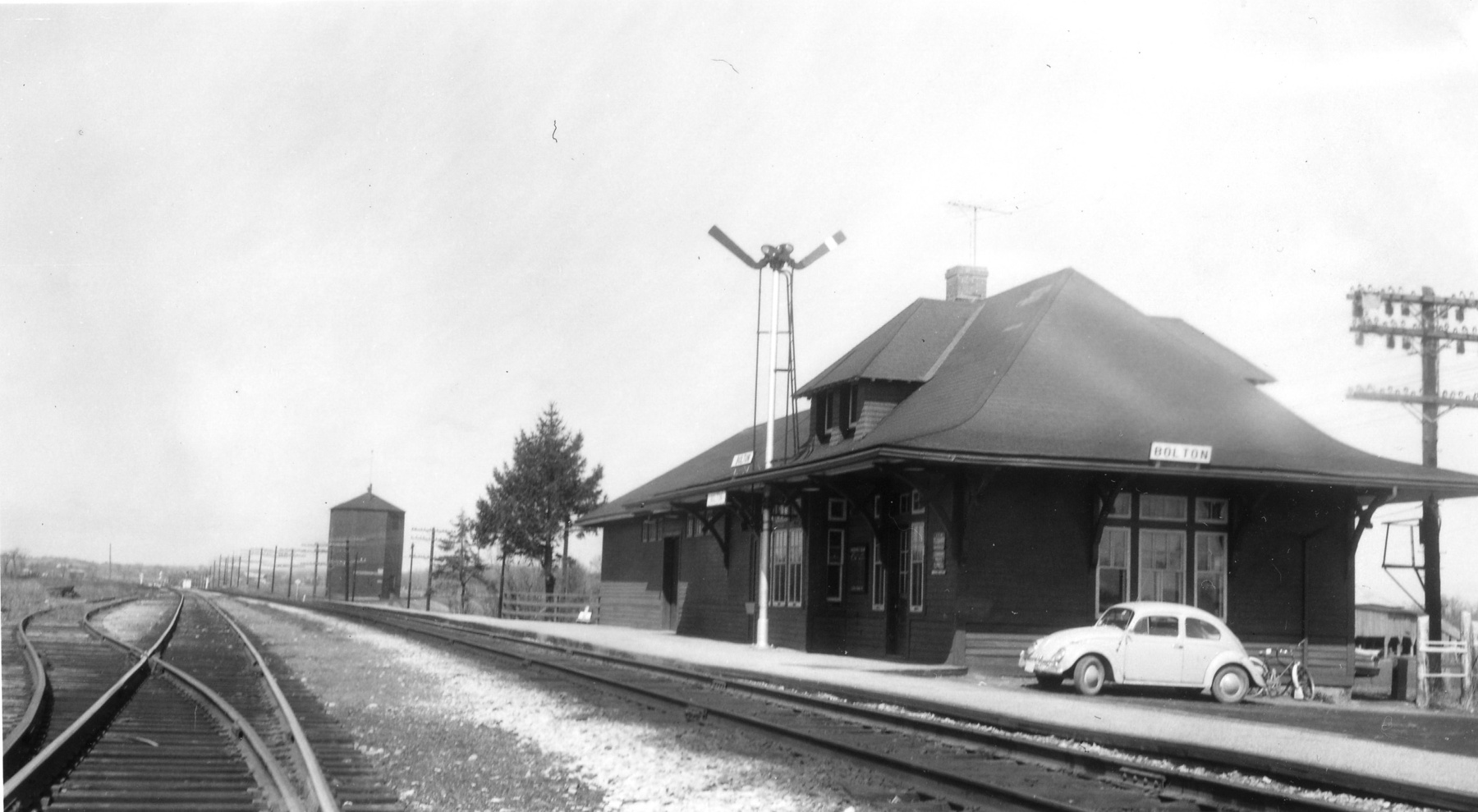Summary
Bolton’s first railway station was built by the narrow-gauge Toronto, Grey & Bruce Railway whilst its construction was progressing towards Orangeville and Owen Sound. It was a simple wooden frame structure with a lean-to roof, providing only the most basic amenities. The station was built near the intersection of Highway 50 and Ellwood Drive, which is where the Toronto, Grey & Bruce had originally established its right-of-way. The first train from Toronto arrived in Bolton on July 17th, 1871 after a temporary turntable was constructed nearby to turn trains around. Service only went as far north as Bolton until it was extended to Orangeville by September of the same year, finally reaching Owen Sound in August 1873.
Over the next decade both the Grand Trunk Railway and Canadian Pacific Railway sought to gain control of the Toronto, Grey & Bruce. The Grand Trunk provided financial assistance in its conversion to standard gauge in 1881, but it was ultimately unable to take over the railway. Through its proxy the Ontario & Quebec Railway, the Canadian Pacific Railway gained control of the Toronto, Grey & Bruce through a 999-year lease in 1883. Rail traffic through Bolton would only increase as the port facilities in Owen Sound became an important node for Canadian Pacific’s transcontinental service. By March 1884 a total of six trains were scheduled to stop in Bolton per day, comprised of an express train, mixed train, and mail train in both directions. For a period of 18 months from May 1884 to November 1885, all of Canadian Pacific’s traffic to the prairies moved through Bolton to connect with steamships that would take passengers to Thunder Bay. Even after the transcontinental railway was opened through northern Ontario in 1885, the steamship service remained popular in the summer months.
In 1905, Canadian Pacific began construction on a more direct rail link between Bolton and the transcontinental line in Sudbury. It was to join with the former TG&B line just over two kilometres west of the original Bolton Station. This change would vastly increase the rail traffic on the line, requiring it to be straightened and regraded in several areas to support heavier and more frequent trains. Part of this work included the segment Bolton’s original train station was situated on, and a new right-of-way was established as much as 0.8 kilometres south of the original in some places. The original station was repurposed as a freight shed and a new one was constructed approximately 970 metres to the west at Old Ellwood Drive and Station Road. A boxcar was used as a temporary station until the new one opened on October 15th, 1908. It utilized a standard design that was built in numerous places on the Canadian Pacific system in the early 20th Century. It was much larger than its predecessor, having an upper floor which contained living quarters for the station agent. The lower level contained a waiting room, baggage room, and the station agent’s office. The station initially had two platforms, one for trains on the Sudbury line and another for trains on the Owen Sound line. By 1921, Bolton Station was seeing twelve passenger trains per day. These ranged from local passenger trains to the cross-country Trans-Canada Limited.
The Great Depression would take its toll on the railway industry in Canada, and service to Owen Sound ceased with the abandonment of the line between Bolton and Orangeville in 1932. Passenger ridership rebounded during and immediately following World War Two, but it began to sharply decline in the postwar era due to increased automobile ownership and air travel. Service to Bolton decreased further after the completion of Highway 400 in 1952, which ran almost parallel to the railway and served many of the same communities. Service was reduced to eight trains per day by 1961, then further to just one train per day by 1963. This train was The Dominion, which was once Canadian Pacific’s flagship transcontinental train but by this point had been relegated to secondary status behind The Canadian. The Dominion ceased to operate in February 1966 prompting the closure of Bolton Station to passengers, after which it remained in use by Canadian Pacific solely as a train order office. The station continued to serve this purpose until 1986 when it was no longer needed. Despite local efforts to save the station it was torn down in 1992.
Condensed Station Info:
| Location: | Served By: | Current State: | Date Built: | Date Demolished: |
| Old Ellwood Drive and Station Road | TG&B (1870 – 1883) CPR (1883 – 1966) | Demolished (Both) | 1870 (First) 1908 (Second) | 1960’s – 1970’s (First) 1992 (Second) |





